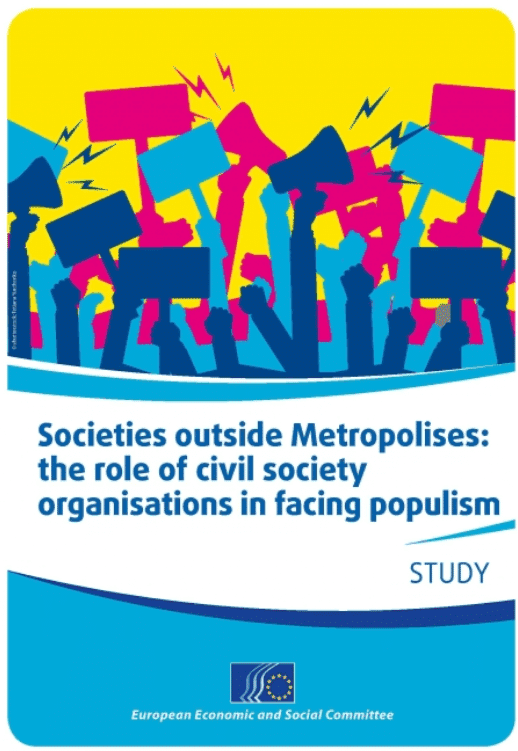
Populism can be best described as a complex web of a political approach, appeal, play on fears, promises and tactics. With no single definition, the only clear thing is how unclear the factors that stem its growth are. But is this just another tactic– not being able to identify when you come across it might be one of populisms’ strongest weapons.
This was both the reason for and the challenge ECAS was up against in carrying out the study “Societies outside Metropolises: the role of civil society organisations in facing populism”. Done on behalf of the European Economic and Social Committee, the two organisations presented the final results together at a specialised event on February 20th in Brussels.
After many months of intense work, the research unravelled many of the weaves behind the rise of populism across Europe, with a comparative focus on smaller regions with a high populist vote in four EU countries, one region at a lower end of the scale and another at the higher end:
During the event, ECAS Executive Director, Assya Kavrakova, highlighted some of the significant findings:
“A huge diversity of factors are at play. The more superficial interpretation of the populist movements based on “people are poor and this is why they vote for populists, because they believe in miracles” is simply not true. A one size fits all policy wouldn’t work in combating it because of the very different and unique factors which interplay. What is needed is building a very solid knowledge base on the factors and what is happening in those regions. Some of them feel totally abandoned.”
She continued on to stress that people are with the feeling that mainstream parties have simply concentrated their efforts in big cities or have gone digital, so therefore rural areas are simply left aside. This is something very striking and calls for going back and “re-conquering” those areas. Otherwise, the reaction of the people is very logical.
Currently, populism in Europe is at its highest level since the 1930s. The average populist vote in the EU Member States stands at 24%, up from 8.5% in 2000. Right- or left-wing populists are members of numerous European governments while, in other Member States, populists also influence the agenda, as members of the opposition, forcing moderate parties to embrace extremist policies. In this context, Euroscepticism is often the direct result of populist resentment.
 The described situation calls for a heavier involvement of civil society organisations (CSOs) on a local level. As economic decline, social instability and limited levels of education are identified as significant factors in explaining the increase in support for populists throughout the EU, CSOs must take action to communicate a more positive message and bring Europe closer to its citizens.
The described situation calls for a heavier involvement of civil society organisations (CSOs) on a local level. As economic decline, social instability and limited levels of education are identified as significant factors in explaining the increase in support for populists throughout the EU, CSOs must take action to communicate a more positive message and bring Europe closer to its citizens.
“The preservation of liberal democracy is everyone’s business,” said the President of the EESC Diversity Europe Group, Arno Metzler. “I believe that the only way to counter populism is through our democratic system, the very system that populists are trying to undermine: the EU must not only speak to people but must actively listen and engage in dialogue. European civil society should help the Union to reach out to citizens, thus preventing and limiting the appeal of populist parties,” he continued.
The study was commissioned by the Diversity Europe Group from the European Citizen Action Service (ECAS) and involved extensive desk research, two statistical analyses, 616 survey responses, three focus groups and 54 in-depth interviews with civil society organisations and experts. It compares two regions with a high populist vote from four EU countries, with one of the regions in each case being at the lower end of the scale and the other at the higher end.
 Access the full study here.
Access the full study here.
View the executive summary of the study here.